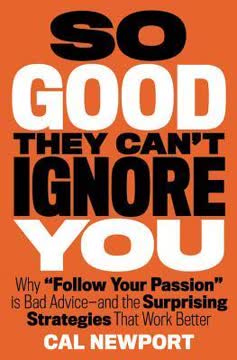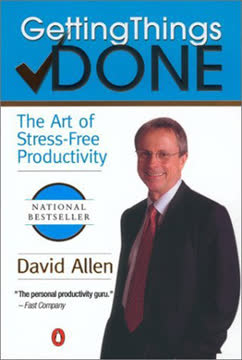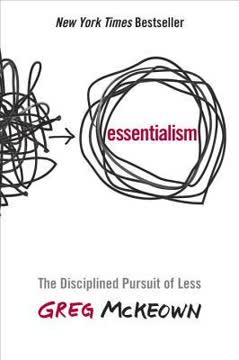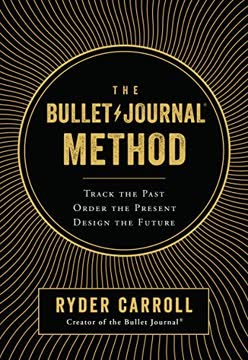つの重要なポイント
1. 共鳴するアイデアを捉えて「第二の脳」を構築する
知識とは、白いトーガを着た古代ギリシャの哲学者たちの名言だけではない。それは、高度な学位を持つ学者たちが書いた厚い教科書の中にある教えだけでもない。
「第二の脳」は個人的な知識管理システムです。 それは、あなたに共鳴するアイデア、洞察、情報を捉えるデジタルな共通ノートブックです。このシステムは、生物学的な脳の限界を超えて思考を拡張し、大量の情報を効率的に保存し処理するのに役立ちます。
キャプチャ基準:
- それはあなたをインスパイアするか?
- それは役に立つか?
- それは個人的か?
- それは驚くべきか?
共鳴するものを捉えることで、あなたの独自の興味や視点を反映した知識のキュレーションコレクションを作成します。この実践は、思考を発展させ、創造性を刺激し、将来のプロジェクトやアイデアの基盤を提供します。
2. PARAを使って情報を行動可能に整理する
PARAは、情報を保存するすべての場所で使用できるため、どこにコンテンツを保存しても同じカテゴリとルールを使用できます。
PARAは行動可能性を重視した整理システムです。 それは、プロジェクト、エリア、リソース、アーカイブの4つの主要カテゴリで構成されています。このシステムは、情報を主題やタイプではなく、どれだけ行動可能かに基づいて整理するのに役立ちます。
PARAカテゴリ:
- プロジェクト: 特定の成果を持つ短期的な取り組み
- エリア: 仕事や生活における継続的な責任
- リソース: 将来役立つ可能性のあるトピックや興味
- アーカイブ: 他のカテゴリからの非アクティブなアイテム
このように情報を整理することで、最も関連性が高く行動可能なアイデアが常に手元にあることを保証します。このシステムは柔軟で、さまざまなデジタルプラットフォームに適用でき、すべての情報に一貫した整理構造を作成します。
3. プログレッシブサマリーを使ってノートの本質を見つける
プログレッシブサマリーは、ノートを最も重要なポイントに蒸留するための技術です。それは、キャプチャし整理した生のノートを、現在のプロジェクトに直接役立つ使える素材に蒸留するシンプルなプロセスです。
プログレッシブサマリーはノートの発見性を高めます。 この技術は、ノートを層ごとにハイライトし要約することで、後で再訪したときに主要なアイデアをすばやく把握できるようにします。
プログレッシブサマリーの4つの層:
- 元のノート
- 主要なポイントを太字にする
- 太字のポイントの中で最も重要なものをハイライトする
- 自分の言葉でエグゼクティブサマリーを書く
このようにノートを蒸留することで、それらをより行動可能でレビューしやすくします。このプロセスは、情報を内面化し、既存の知識と結びつけるのにも役立ち、理解と創造性を高めます。
4. 自分の仕事を見せることでアイデアを表現する
知識の目的は共有することです。何かを知っていても、それが誰にも、ましてや自分自身にも良い影響を与えないなら、何の意味があるのでしょうか?
アイデアを表現することは「第二の脳」を構築する究極の目標です。 それは、収集した知識を他者に利益をもたらし、個人的および職業的成長に貢献する具体的な成果に変えることです。
アイデアを表現する方法:
- 記事やブログ投稿を書く
- プレゼンテーションやワークショップを作成する
- 製品やサービスを開発する
- ソーシャルメディアで洞察を共有する
- 意義のある会話に参加する
定期的にアイデアを表現することで、世界に貢献するだけでなく、自分自身の学びと理解を強化します。この実践は、さまざまな情報の間のつながりを発見し、さまざまなトピックに対する独自の視点を発展させるのに役立ちます。
5. 効率的な知識作業のための中間パケットを作成する
中間パケットは、あなたの仕事を構成する具体的な個々のビルディングブロックです。
中間パケットは再利用可能な作業単位です。 これらは、より大きなプロジェクトを作成するために組み合わせて使用できる小さくモジュール化されたコンテンツの部分です。中間パケットの観点から考えることで、より効率的かつ柔軟に作業できます。
中間パケットの種類:
- 蒸留されたノート
- 過去のプロジェクトからのアウトテイク
- 進行中のドキュメント
- 最終成果物
- 他者が作成したドキュメント
中間パケットを作成し再利用することで、過去の作業を活用し、生産性と創造性を高めます。また、大規模なプロジェクトを管理しやすい部分に分解することで、短時間でも進捗を得やすくなります。
6. デジタル整理のための基本的な習慣を身につける
「第二の脳」を構築することは、単に新しいソフトウェアをダウンロードして一度に整理することではなく、動的で柔軟なシステムと習慣を採用し、環境(および心)を混乱させることなく必要なものに常にアクセスできるようにすることです。
一貫した習慣は「第二の脳」を維持するために重要です。 これらの習慣は、デジタル環境を整理し機能的に保つのに役立ち、システムが時間とともに有用であり続けることを保証します。
デジタル整理のための基本的な習慣:
- プロジェクトチェックリスト: プロジェクトの開始と完了のための標準化されたチェックリストを使用する
- 週次および月次レビュー: 定期的にシステムをレビューし更新する
- 気づきの習慣: ノートを改善する小さな機会を活用する
これらの習慣を身につけることで、成長し進化する持続可能なシステムを作り出します。これらの実践は、大規模な時間投資や完全なオーバーホールを必要とせずに、デジタル世界の秩序を維持するのに役立ちます。
7. 欠乏から豊かさへのマインドセットの転換
「第二の脳」を作り始めるとすぐに起こる最大の変化は、欠乏のレンズを通して世界を見ることから、豊かさのレンズを通して見ることへのシフトです。
豊かさのマインドセットは情報との関係を変えます。 情報を逃すことへの恐れから情報を溜め込むのではなく、持っている知識をキュレーションし活用することを学びます。このシフトにより、無限にコンテンツを消費するのではなく、価値を創造することに集中できます。
豊かさのマインドセットの利点:
- 情報過多に対する不安の軽減
- 関連情報を見つける能力への自信の向上
- 知識を共有する意欲の増加
- 創造と貢献に集中する能力の向上
豊かさのマインドセットを採用することで、消費する情報に対してより選別的になり、知識を共有することに対してより寛大になります。この視点は、創造性と生産性を高めると同時に、ストレスと圧倒感を軽減します。
8. 発散と収束の創造プロセスを受け入れる
何かを創造するプロセスを見てみると、それは発散と収束の間を交互に行き来する同じシンプルなパターンに従います。
創造性は探索と集中の間を交互に行き来することを含みます。 発散はアイデアや可能性を集めることであり、収束はそれらのアイデアを絞り込み、洗練することです。
創造プロセス:
- 発散: アイデア、リサーチ、インスピレーションを集める
- 収束: 最良のアイデアを発展させ、洗練する
- 必要に応じて繰り返す
このプロセスを理解することで、創造の旅をより効果的にナビゲートできます。探索の必要性と具体的な成果を生み出す必要性のバランスを取り、より成功し満足のいく創造的な作業を行うことができます。
9. 一貫した実行のためのプロジェクトチェックリストを活用する
プロジェクトの成功したスタートは、ほぼ偶然に任されています。
プロジェクトチェックリストは、作業の一貫した実行を保証します。 プロジェクトの開始と完了のための標準化されたチェックリストを作成することで、「第二の脳」を最大限に活用し、一貫したワークフローを維持できます。
サンプルプロジェクトキックオフチェックリスト:
- プロジェクトに関する現在の考えをキャプチャする
- 関連するフォルダやタグをレビューする
- すべてのフォルダで関連するコンテンツを検索する
- 関連するノートをプロジェクトフォルダに移動またはタグ付けする
- アウトラインを作成し、プロジェクトを計画する
このようなチェックリストを使用することで、意図を持ってプロジェクトを開始し、効果的に完了させることができます。既存の知識とリソースを活用し、より効率的で成功したプロジェクトの成果を得ることができます。
10. 定期的なレビューを行い「第二の脳」を維持する
週次レビューは現実的で実践的ですが、月次レビューはもう少し反省的で全体的なものをお勧めします。
定期的なレビューは「第二の脳」を関連性のある機能的なものに保ちます。 週次レビューは新しい情報を処理し、コミットメントを把握するのに役立ち、月次レビューは大きな目標やシステムを反映するのに役立ちます。
月次レビューの構成要素:
- 目標をレビューし更新する
- プロジェクトリストをレビューし更新する
- 責任領域をレビューする
- いつかやりたいタスクをレビューする
- タスクの優先順位を再設定する
これらのレビューを一貫して行うことで、「第二の脳」が現在の優先事項や目標と一致し続けることを保証します。この実践は、明確な心を保ち、最も重要なことに集中するのに役立ちます。
11. 気づきの習慣を実践してシステムを強化する
整理整頓を維持することは重要ですが、それは日常生活の流れの中で少しずつ行う必要があります。
小さな一貫した行動が「第二の脳」を維持し改善します。 気づきの習慣は、日常の作業を進める中でノートやシステムを改善する小さな機会を活用することです。
気づきの習慣の例:
- ノートのタイトルを改善して発見性を高める
- ノートをより関連性のあるフォルダに移動する
- ノートの主要なポイントをハイライトする
- 関連するノートを統合する
これらの習慣を実践することで、大きな時間投資を必要とせずに「第二の脳」を継続的に改善します。このアプローチは、システムが有用で最新の状態を保つことを保証します。
12. 自己表現を育み知識を共有する
あなたが解決するのに最適な問題が世界にはあります。
あなたの独自の視点と知識は価値があります。 「第二の脳」を構築することは、個人的な生産性だけでなく、アイデアを発展させ、それを世界と共有することです。あなたの経験と洞察は、他者に大きな影響を与えることができます。
自己表現を育む方法:
- ブログやポッドキャストを始める
- ワークショップやコースを教える
- 記事や本を書く
- 意義のある会話に参加する
- 問題を解決する製品やサービスを作成する
知識やアイデアを共有することで、世界に貢献するだけでなく、自分自身の理解を深めます。この自己表現の実践は、個人的な成長、職業的な機会、そして他者に良い影響を与えているという充実感をもたらすことができます。
最終更新日:
FAQ
What's Building a Second Brain about?
- Organizing digital life: Tiago Forte's book offers a method to manage the vast amount of information we encounter daily, helping readers organize their digital lives effectively.
- Second Brain concept: It introduces the idea of a "Second Brain," a digital archive that stores valuable memories, ideas, and knowledge to support decision-making and creativity.
- Enhancing productivity: By transforming our relationship with information, the book aims to unlock creative potential and improve efficiency in work and personal projects.
Why should I read Building a Second Brain?
- Addressing information overload: The book provides practical strategies to manage and utilize the overwhelming amount of content we consume.
- Improving creativity and productivity: It helps harness knowledge and ideas, leading to better decision-making and more creative output.
- Timeless principles with modern tools: Combines timeless knowledge management principles with contemporary technology, making it relevant for today’s digital landscape.
What are the key takeaways of Building a Second Brain?
- The CODE Method: Introduces the four steps—Capture, Organize, Distill, and Express—to help build and utilize your Second Brain effectively.
- Personal Knowledge Management (PKM): Emphasizes the importance of PKM to manage knowledge and information flow, enhancing cognitive abilities.
- Action-oriented organization: The PARA system (Projects, Areas, Resources, Archives) helps categorize information based on its actionability.
What is the CODE Method in Building a Second Brain?
- Capture: Collect valuable insights and ideas from various sources, saving only what resonates with you.
- Organize: Categorize notes using the PARA system to keep track of actionable information related to current projects.
- Distill: Refine notes to highlight the most important points, making them easily discoverable for future use.
- Express: Share insights and knowledge, turning captured information into actionable outputs that can benefit others.
What is the PARA system mentioned in Building a Second Brain?
- Four categories: PARA stands for Projects, Areas, Resources, and Archives, which are the main categories for organizing notes and files.
- Actionability focus: Prioritizes how actionable information is, allowing quick access based on current goals and responsibilities.
- Dynamic organization: Designed to be flexible, enabling movement of notes between categories as projects and interests evolve.
How does Building a Second Brain address information overload?
- Practical strategies: Offers actionable techniques to filter and manage vast amounts of information, reducing anxiety and overwhelm.
- Creating a knowledge vault: Building a Second Brain allows storage and organization of valuable insights for easy access when needed.
- Encouraging intentional consumption: Promotes a mindful approach to consuming content, focusing on quality over quantity.
What is Progressive Summarization in Building a Second Brain?
- Layered highlighting technique: Involves highlighting key points and further distilling those highlights into concise summaries.
- Enhancing discoverability: Creates layers of information, making it easier to find and recall important insights.
- Facilitating deeper understanding: Encourages active engagement with notes, leading to a better grasp of the material.
What are Intermediate Packets in Building a Second Brain?
- Building blocks: Intermediate Packets (IPs) are reusable components of your work, such as distilled notes and outtakes.
- Five types: Include distilled notes, outtakes, work-in-process documents, final deliverables, and documents created by others.
- Efficiency: Creating and reusing IPs saves time and effort in future projects, allowing you to build on past work.
How can I implement the habits discussed in Building a Second Brain?
- Project Checklists: Use checklists for project kickoff and completion to ensure consistent starts and finishes.
- Weekly and Monthly Reviews: Conduct regular reviews to assess progress, update goals, and clear your digital workspace.
- Noticing Habits: Develop the habit of noticing small opportunities to improve notes and organization.
What mindset shifts are encouraged in Building a Second Brain?
- From scarcity to abundance: Encourages viewing information as abundant, fostering creativity and reducing anxiety.
- From obligation to service: Emphasizes serving others with your knowledge, encouraging sharing insights and experiences.
- From consuming to creating: Advocates for transitioning from passive consumption to active creation and expression.
What does Tiago Forte mean by "Second Brain"?
- External knowledge system: A digital repository to store and organize thoughts, ideas, and knowledge, offloading cognitive burden.
- Enhancing cognitive abilities: Acts as an extension of your mind, helping remember and connect ideas without relying solely on biological memory.
- Facilitating creativity: A structured system for knowledge allows easier access to insights and inspiration, leading to greater creative output.
What are some common mistakes novice notetakers make according to Building a Second Brain?
- Over-highlighting: Highlighting too much information makes it difficult to discern the most important points later on.
- Highlighting without purpose: Capturing notes without clear intention can lead to clutter and confusion.
- Neglecting to distill: Failing to summarize and refine notes results in a collection of information that is hard to navigate and utilize effectively.
レビュー
本書『Building a Second Brain』は、賛否両論の評価を受けている。多くの読者は、個人の知識管理に対する実践的なアプローチを称賛し、情報を整理するためのCODEフレームワークやPARAファイリングシステムを貴重なツールとして評価している。生産性や創造性に関する洞察も好評だ。しかし、一部の読者は冗長であり、重複する情報が含まれていると批判している。批評家は、核心となる概念をもっと簡潔に伝えることができたと主張している。賛否両論あるものの、多くの読者はデジタル情報の過負荷を管理し、生産性を向上させるための戦略が役立つと感じている。
Similar Books
















